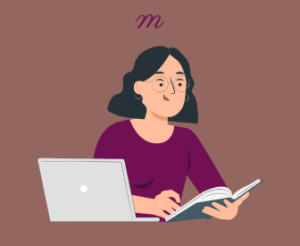The most effective therapy techniques and interventions are those that are carefully tailored to the unique needs, circumstances, and readiness of each client. Over the course of my clinical experience, I have come to understand that the power of any given technique is largely dependent on the strength of the therapeutic alliance and the client’s willingness to engage with the process.
Fundamental Therapy Techniques
I personally consider a few techniques to be the most fundamental therapeutic tools: compassionate inquiry, unconditional positive regard, socratic questioning, positive asset search and reflection of feelings.. These are the techniques that I think are the best in the sense that they are the most fundamental and crucial and should form the bedrock of any therapeutic alliance.
1. Compassionate Inquiry
The method of compassionate inquiry often enables my clients to overcome their most profound challenges. Compassionate inquiry entails building a safe, non-judgmental environment where clients finally feel witnessed, heard, and understood. There is a way of being with the clients that is about listening deeply and encouraging the clients to share more about their experiences in a warm and curious manner. For instance, when a corporate executive Rajesh was describing his struggles with controlling anger, a very simple yet curious and compassionate question – “What does this anger protect you from?” – helped him realize the reason behind his hesitancy to embrace his vulnerability. This new appreciation gave direction to the choice of interventions to be implemented next instead of going directly into anger management techniques.
2. Unconditional Positive Regard
This means accepting the clients as they are but having faith that they can improve. For example, after Priya apologised and said she did not do her therapeutic assignment, I was not frustrated. Instead, I was curious, “It sounds like something important got in the way. Would you like to explore what that might be?” This kind of acceptance is often the first time clients experience being appreciated without regards to their perceived achievements or failures.
3. Socratic Questioning
Socratic questioning encourages clients to find their own answers through a process of exploration rather than by being told how to think or what to believe. Meera exclaims, “I will never be good at socializing,” and so I ask her questions such as, “What would it look like to be good at socializing?” and, “Are there any instances, even if small, where you enjoyed being social?” that made her absolutist thinking less extreme and allowed her to be in control of the therapy.
4. Positive Asset Search
In positive asset search, the client’s strengths, resources, and past successes are examined and explored. This technique serves to lessen the emphasis that people naturally have on problems and shortcomings. For instance, when Meera asserted, “I will never be sociable,” I could ask, “Can you recall any fleeting moments when you were at ease and poised in a public gathering?” This format of questioning tries to bring out Meera’s latent social skills, which she can work on afterward.
5. Reflection of Feelings
This is a way of validating and affirming a therapeutic relationship with the feelings of the client. We can do it by making an observation: “It seems as though you are in a very tense place at the moment,” as a way of informing them that we value their feelings. This simple gesture can be very calming and grounding, particularly for clients who have been made to feel that their feelings were unwelcomed or invalid. A reflection of feelings encourages a safe and trusting bias towards the client enabling them to further and willingly delve into the client’s world.
Keep in mind that while certain methods and techniques have their merits, they function constructively only when incorporated into a well-maintained therapeutic relationship characterised by the following:
- Active listening
- A real interest in the client’s perspective
- Understanding and respecting clients’ cultures
- Being adaptable in one’s methods
- Belief in the client’s inherent competence to solve their problems
In the process of choosing therapeutic measures, the following factors should be accounted for:
- The culture and value system of the client,
- How the client has responded to therapy previously,
- The present situation of the client and the support available to him/her.
- What do they want the psychotherapy to do for them?
- How open are they to the different approaches?
Examples
Consider the case of a 45-year-old businessman, Arjun, who presented with severe anxiety and panic attacks. While many therapists may have resorted to exposure therapy or cognitive techniques, what really defined Arjun’s journey was the Internal Family Systems or IFS therapy — popularly known as parts work. It was through this method that Arjun discovered that his debilitating state of anxiety was being caused by a ‘perfectionist protector’ part of himself, who sought to protect him from the agony of experiencing another business failure, like his father. Through understanding and dialoguing with this protective part, Arjun was able to overcome the limitation that prevented him from taking healthy risks in his business. The somatic experiencing components of IFS also enabled him to prevent himself from panicking by first identifying and managing anxiety.
On the contrary, Meera, a 28-year-old teacher with social anxiety disorder, was markedly transformed through the integrated solution-oriented brief therapy and narrative therapy. Instead of focusing on previously existing traumas or phobias, the scope of intervention shifted onto the instances where Meera enjoyed and coped well with the social environment- also known as her ‘unique outcomes.’ Because of all this, after a period of time, Meera was able to start building up an alternative story of herself focused on her abilities in social situations. The turning point in this case was experienced when she replaced the label of ‘socially anxious’ with that of ‘selectively sociable’ as a means of preserving her introverted self but giving limits to the fear of the unknown avoidance tactics that she engaged in before.
Next, we can examine the example of Kavita, a 41-year-old homemaker who has been suffering from chronic pain, as well as depression. When traditional cognitive-behavioural therapy (CBT) appeared too rigorous and removed from her reality, Kavita underwent treatment with body-based interventions and participated in dance/movement therapy to promote healing within herself. The incorporation of soft movements and mudras as they are practised in Indian classical dance enabled her to get in touch with her body not only as a source of pain, but also as a reservoir of wisdom. This culturally-attuned intervention has delivered results that far exceed the outcomes of a generic CBT treatment.
Such cases demonstrate an important reality regarding therapeutic work that is: there is no technique that is the best – rather, the best therapy technique is the one which fits the client’s needs as well as his/her culture and stage of readiness for change. As a therapist, I have come to understand that every client comes with a unique experience and that it is closed-minded to fix a course of action without first trying to understand this experience.
Conclusion
To sum up, it is good to possess an arsenal of therapy techniques, but clinical practice is knowing which weapons to use when and how. All clients are different and therefore, the treatment appropriate for one client’s needs might not fit into another’s; this is where the skill of the therapist comes in. The most effective method is the one that allows the client to feel that their experience, understanding, and motivations for reaching out are valued in the process of recovery.
Why other mental health professionals love Mentalyc

“Do yourself a favor, make your life easier. Use the tools that are readily available … I found Mentalyc to be one of the best tools that I’ve ever used.”
Licensed Marriage and Family Therapist

“It immediately changed my quality of life, personally and professionally. I went from 3–4 hours a week of notes to 1 hour at most … that alone is invaluable personally and professionally.”
Owner/Independently Licensed Marriage & Family Therapist (IMFT)

“For those who have hesitations … It is a lifesaver. It will change your life and you have more time to be present with your patients.”
Licensed Clinical Social Worker

“If I were recommending this software to a colleague, I would tell them that it is the best thing that they could do for their practice.”
Licensed Professional Counselor







